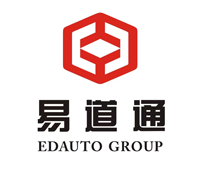The rapid development of China’s new energy vehicle exports is not only
an important symbol of domestic industrial upgrading, but also a strong impetus for the global energy green and low-carbon transformation and international energy cooperation. The following analysis is carried out from three dimensions: technological breakthroughs, market impact, and international cooperation, and combined with the innovative practices of brands such as BYD, LI auto, and Xiaomi, to explain its global significance.
1. Technological breakthrough: China’s global competitiveness in new energy vehicles
(1) BYD’s hybrid technology and cost advantages
BYD has reduced NEDC fuel consumption to 2.9L/100km with its fifth-generation DM (dual-mode) hybrid technology, and its comprehensive range has exceeded 2,100km, significantly reducing user costs. Its Qin L DM-i and Haibao 06 DM-i, with a starting price of 99,800
yuan, have overturned the A-class car market and forced traditional fuel vehicles to exit at an accelerated pace. In addition, BYD’s “blade battery” has improved energy density and safety through structural innovation, becoming one of the benchmarks of global power battery technology.
(2) Xiaomi SU7’s smart ecosystem and performance benchmark
Xiaomi SU7 Ultra is equipped with Surge OS smart cockpit, supports five-screen linkage and car-home interconnection, and realizes the full-scenario intelligence of “people-car-home”. Its dual-motor version accelerates from 0 to 100 km in just 2.78 seconds. With the CATL Kirin 5C battery, it can last 400 kilometers after charging for 5 minutes, which is a high cost-effective benchmark against Tesla Model S Plaid. Through the “hardware + software + service” ecological chain model, Xiaomi has quickly brought smart driving technology to the 200,000-300,000 yuan market and promoted technological equality.
(3)LI Auto’s scenario-based innovation and extended-range technology
LI L6 offers space and comfort similar to high-end models at a price
below 250,000 yuan. It relies on extended-range technology to solve range anxiety, with an average monthly sales of over 20,000 units, becoming the first choice for family users. Its CDC shock absorber and smart cockpit design precisely match family travel needs, and explore new profit models through software subscriptions (such as AD Max autonomous driving package).
2. Market impact: Promoting the transformation of global energy structure
(1) Reduce the cost of global green technology application
The scale effect and technological iteration of China’s new energy vehicle industry chain have significantly reduced the cost of photovoltaic components, lithium batteries and other products. For example, China’s exports of solar panels account for more than 50% of the world’s new installations, helping developing countries achieve energy transformation at a lower cost. The technology output of companies such as BYD and CATL has reduced the global cost of electric vehicle batteries by 80% compared with 2015.
(2) Accelerate the decarbonization of the transportation sector
In 2024, China will export 1.773 million new energy vehicles, accounting for nearly 30% of the global market, of which one out of every three vehicles exported is an electric vehicle. BYD Tang L EV is equipped with a 1000V+10C supercharger architecture, and Zeekr 7X is upgraded to 900V+5C fast charge. These technologies promote the upgrade of global charging infrastructure, shorten the charging time, and improve user acceptance.
(3)Reconstructing the global automotive industry landscape
The Wenjie M9 has an annual sales volume of 160,000 units at an
average price of RMB 550,000, surpassing the same-priced models of BBA (Mercedes-Benz, BMW, and Audi), marking a breakthrough for Chinese brands in the high-end market. LI and Xiaomi have formed an alternative advantage to joint venture brands in the RMB 200,000-500,000 price range through differentiated positioning (family scenarios and smart ecosystems), and it is expected that the market share of domestic brands will increase to more than 60% in 2025.
3.International Cooperation: Building a Green Industrial Chain
(1)Technology output and capacity collaboration
The Al Schubach photovoltaic power station project built by a Chinese company in Saudi Arabia is expected to reduce carbon emissions by 245 million tons in 35 years, equivalent to planting 545 million trees. BYD, NIO and other brands have built localized factories in Southeast Asia and Europe to promote the upgrading of local industrial chains. For example, BYD’s Thai factory has an annual production capacity of 150,000 vehicles, covering the ASEAN market.
(2)Standard setting and global initiative response
China participated in the formulation of the International Renewable Energy Agency (IRENA)’s 2030 installation target, promising to triple the global installed capacity of renewable energy. Huawei’s intelligent driving solution and Xiaomi’s V2X vehicle-road collaboration technology are becoming an important part of the international intelligent connected vehicle standards.
(3)Addressing the challenge of global energy equity
China’s new energy products are exported to more than 200 countries and regions, helping Africa, Latin America and other regions to solve energy accessibility issues. For example, the penetration rate of Chint Group’s solar energy equipment in rural areas of Africa exceeds 30%, significantly improving the problem of power shortage.
4. Future Outlook: Intelligence and Global Collaboration
In 2025, smart driving will become the core battlefield for Chinese automakers. BYD plans to popularize its self-developed smart driving system in 100,000-200,000 yuan models. Xiaomi SU7 has achieved full coverage of urban NOA scenarios. Huawei and Seres’s M9 improves the safety of autonomous driving through AI big models. At the same time, Chinese automakers complement European, American, Japanese and Korean companies through the “technology + production capacity + capital” trinity model. For example, Geely cooperates with Renault to develop a hybrid platform, and CATL supplies 4680 batteries to Tesla.
The globalization of China’s new energy vehicles is not only a reflection of the competitiveness of the industry, but also a substantial contribution to global climate governance. Through technological innovation, market penetration and international collaboration, Chinese companies are becoming an “accelerator” of green and low-carbon transformation, providing a replicable model for building a community with a shared future for mankind. As the head of the International Energy Agency said: “China is reducing the global cost of green technology with high-quality production capacity, which is the responsibility of a responsible major country.”
Email:edautogroup@hotmail.com
Phone / WhatsApp:+8613299020000
Post time: Apr-08-2025


